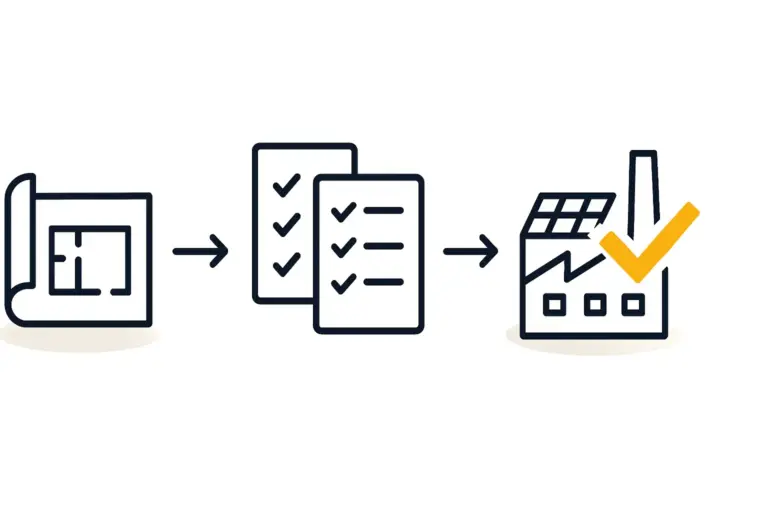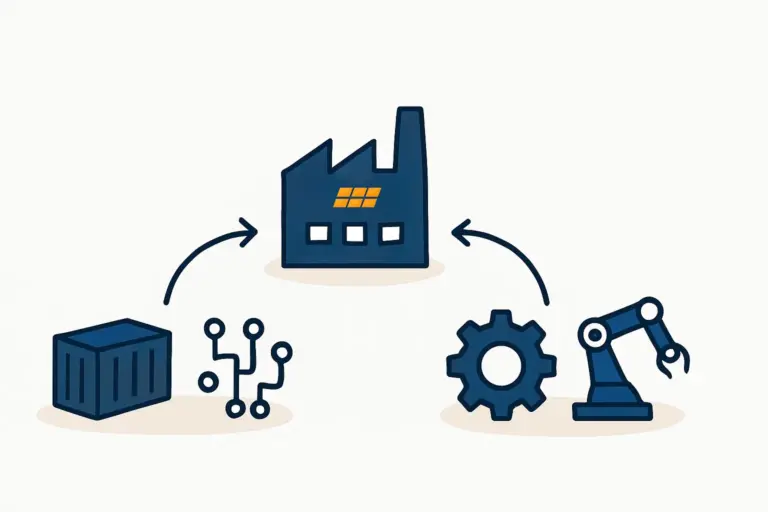Many international entrepreneurs view Europe’s green energy market as a landscape dominated by massive solar and wind farms, with a focus on energy generation. However, a significant and often overlooked opportunity lies not in deploying the final product, but in manufacturing it. The Czech Republic, positioned at the heart of Europe, has become a strategic manufacturing hub, backed by substantial EU and national funding aimed at building the continent’s green technology supply chain.
For investors exploring how to start a solar module production business, understanding this funding landscape can transform a project’s financial viability from promising to exceptional. This guide explains the primary subsidy mechanisms available and outlines how a new solar panel factory can tap into these powerful financial incentives.
Understanding the Financial Landscape: The EU Modernisation Fund
The primary engine for green investment in the Czech Republic is the EU Modernisation Fund. This is not a typical grant program but a dedicated financial instrument designed to help 13 lower-income EU member states accelerate their transition away from fossil fuels.
The fund is financed by revenues from the European Union’s Emissions Trading System (ETS)—the “cap and trade” system where companies pay for their carbon emissions. In essence, polluters are helping to finance the green transition.
The Czech Republic is the second-largest beneficiary of this fund, set to receive over €15 billion by 2030. This capital is disbursed through national programs aimed at everything from renewable energy generation to improving industrial energy efficiency. For an investor, the key insight lies in the fund’s strategic purpose: to build a resilient and independent green energy ecosystem within Europe. This mission explicitly includes building the manufacturing capacity needed to support that ecosystem.

A solar module factory is not just a standalone industrial project; it’s a critical piece of infrastructure that directly serves the fund’s objectives of energy independence and technological leadership.
From European Policy to Czech National Programs
The Modernisation Fund’s capital is administered through a series of calls and programs managed by the Czech government, primarily via the State Environmental Fund (Státní fond životního prostředí ČR). While many of these programs—such as the popular RES+ calls—focus on constructing new photovoltaic power plants, policy support extends to the entire value chain.

Complementing the EU funds are the Czech Republic’s national investment incentives, governed by Act No. 47/2002 Coll. These are designed to attract strategic, high-value-added projects. For a solar manufacturing facility, these incentives can be substantial and may include:
- Corporate Income Tax Relief: For up to 10 years.
- Cash Grants for Job Creation: Financial support for each new skilled position created.
- Cash Grants for Capital Expenditure: A percentage of eligible investment costs may be covered, especially for projects in priority regions.
- Support for Land Acquisition: Favourable pricing for municipal or state-owned land.
The combination of these two streams—EU-funded programs and national incentives—builds a powerful financial case. This combination significantly lowers the initial capital barrier, a key consideration when calculating the total investment required for solar panel manufacturing.
Key Eligibility Criteria for Manufacturing Subsidies
Securing public funding requires a project that is not only commercially viable but also strategically aligned with public policy goals. While specific criteria vary between programs, applications for solar manufacturing incentives are generally evaluated on four core principles:
-
Strategic Alignment: The project must demonstrably contribute to Czech and EU goals for energy security, decarbonisation, and technological sovereignty. A plan to produce high-efficiency modules using modern technology will be viewed more favourably than one using older, less efficient methods.
-
Technological Viability: The proposal must be technically sound. This involves detailing the production process, the quality of machinery, and the expected output. Sourcing proven turnkey solar module production lines can add significant credibility to an application, as it demonstrates a clear, executable plan based on established technology.
-
Financial Soundness: Investors must prove the project is commercially sustainable in the long term. Public funds are intended to de-risk and accelerate investment, not to support unviable ventures. The cornerstone of this is a comprehensive financial model and business plan.
-
Job Creation & Regional Development: A key objective of these incentives is creating high-quality, long-term employment. Projects located in regions with higher unemployment or those undergoing industrial transformation often receive preferential treatment.
Based on experience from J.v.G. turnkey projects, a meticulously prepared business plan is the single most important document in the application process. It must convincingly address all four of these principles.
Navigating the Application Process: A Practical Overview
The application process for these incentives is rigorous and demands detailed preparation. The central point of contact for foreign investors is typically CzechInvest, the national investment and business development agency.

CzechInvest acts as an intermediary, guiding investors through the bureaucratic process and helping them prepare the necessary documentation. The core of any application is the formal proposal, which must include:
- A detailed project description.
- Technical specifications of the plant and machinery.
- A comprehensive business plan for a solar panel factory with multi-year financial projections.
- A market analysis and sales strategy.
- A detailed plan for job creation and employee training.
The evaluation process involves multiple ministries and can take several months. Success depends entirely on the quality and thoroughness of the submitted documentation.
Frequently Asked Questions (FAQ)
What is the typical success rate for these applications?
Success rates vary depending on the specific program and the quality of the proposal. However, projects that are well-prepared, financially sound, and clearly aligned with the Czech Republic’s strategic industrial and energy goals have a strong chance of receiving support.
Do I need a local partner in the Czech Republic?
While not a formal requirement, having local partners or expert consultants is highly advantageous. They can help navigate the administrative landscape, understand regulatory nuances, and build relationships with key agencies, significantly streamlining the process.
How long does the subsidy application process take?
Investors should plan for a timeline of 6 to 12 months from initial submission to final approval. The process is thorough and involves multiple stages of review.
Can these subsidies cover the entire investment?
No. Public subsidies are designed to co-finance a project alongside private investment. The investor is always required to provide significant equity. The subsidy acts to reduce overall financial risk and improve the return on investment.
Is this funding only for large corporations?
Not at all. The Czech government actively encourages investment from small and medium-sized enterprises (SMEs), particularly if they are introducing innovative technology or creating skilled jobs in priority regions. A strong, strategic project from a smaller company can be very competitive.
Conclusion: The Strategic Advantage of a Subsidised Investment
The Czech Republic, backed by the EU Modernisation Fund, offers one of Europe’s most compelling environments for establishing a solar module manufacturing facility. The available subsidies do more than simply improve a project’s balance sheet; they represent a clear signal of long-term government partnership and policy alignment.
For the international entrepreneur, this creates a unique opportunity to build a competitive, state-of-the-art manufacturing asset in a stable, high-growth market. Accessing these funds requires diligence, strategic planning, and a deep understanding of the application process, but the financial and strategic rewards can be transformative.






